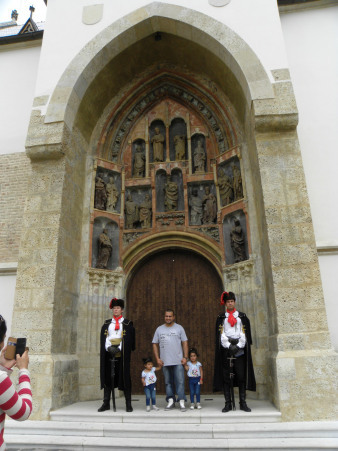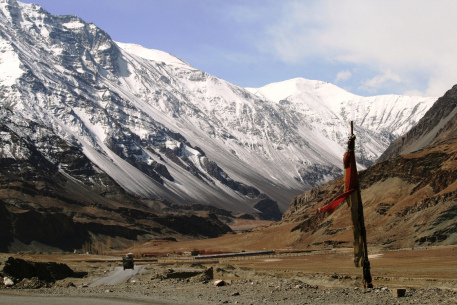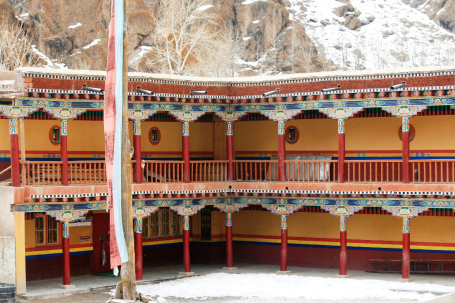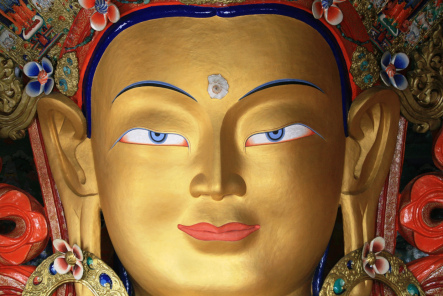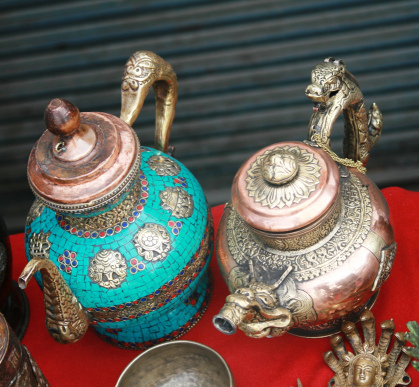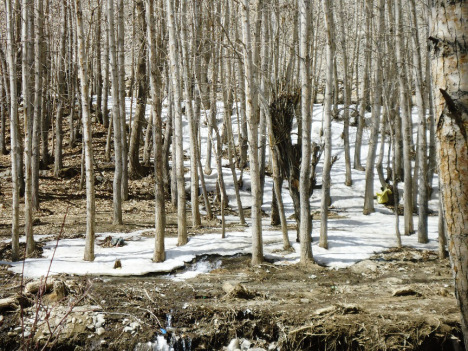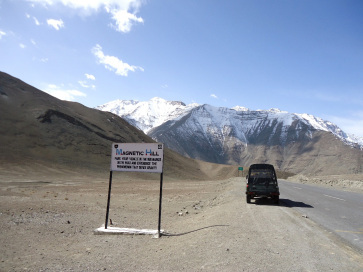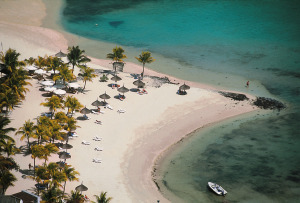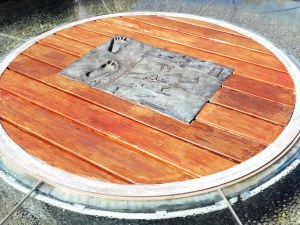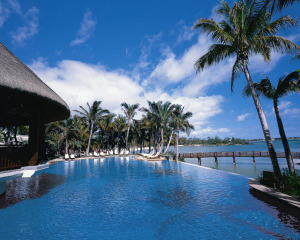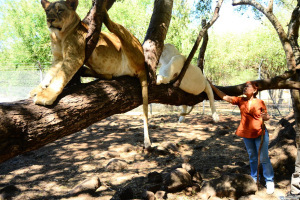Tanushree Podder's Blog, page 4
September 26, 2015
Beauteous Budapest
June 8, 2015
Host so hearty
It is known by different names in different countries. For instance, the Irish call it carabhat, the Portuguese gravata, and the Filipino korbata, but in English it’s known as cravat.
Call it by any name, the fact is that the humble piece of fabric fashioned as a stylish neckband is a Croatian invention. This ancestor of the necktie and bow tie was first worn by Croatian soldiers in the 17th century.
During the Thirty Years’ War, King Louis XIII of France hired Croatian mercenaries to fight for his country. The mercenaries, in a bid to be easily recognised, wore scarves around their necks. Over a period of time the scarf mutated into cravat and became associated with the Croatian soldiers. It was a permanent fixture of their battle dress.
cravats are a part of the uniform of the guards at St. Mark’s Church
Over the next couple of centuries, it gained importance as a sartorial essential and became an indispensable item of wear across Europe. It is said the king was so taken up with it that he wore it to the court. A cravatier (cravat creator) was employed to make them in different colours and fabrics for the king to wear on different occasions. The royal interest in the neckpiece set a trend and soon the nobility followed suit. However, in 1664, with the founding of the Royal Cravates (a Croatian Regiment) in the French army, the Croatian link to cravat had come to stay.
Today, there are no fewer than 85 kinds of knots to fashion a cravat, the most popular being the one invented by the Duke of Windsor, but that’s another story. The country also has an elite regiment of soldiers called the Cravat Regiment. What is interesting is that the country celebrates Cravat Day to reinforce its importance in fashion. In 2008, the Croatian Parliament made a momentous announcement and declared October 18 as the ‘Day of the Cravat’.
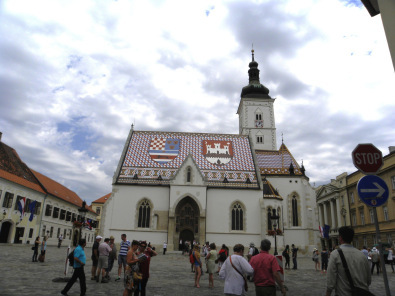 St. Mark’s Square where the Cravat Parade is held
St. Mark’s Square where the Cravat Parade is heldOn this day, St Mark’s Square in Zagreb turns into a venue for pageantry and parade. Although I wasn’t lucky enough to attend the Cravat Day, I took solace in the Changing of Guards ceremony there. I lived the history of the neckwear by watching the smart guards (togged in bright red cravats and medieval uniform) of the Cravat Regiment.
From fashion to food
While cravats are interesting, they don’t satisfy the sweet tooth of human beings. For those who need their sugar fix, the Croatians have yet another creation — the kremšnita. The Croatians have a quite a hearty sweet tooth. The traditional kremšnita, a variation of the cream cake, has the ability to make an easy transition from a perfect snack to a delectable dessert. A specialty of Samobor, it comes with a pastry-top filled with custard cream, sprinkled with powdered sugar.
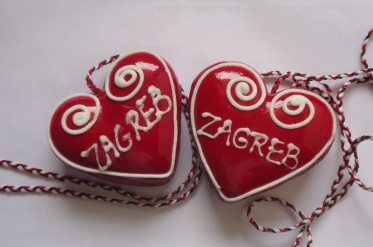 the ubiquitous hearts..
the ubiquitous hearts..As we entered Samobor, it was impossible not to notice the huge billboards advertising the bakeries that manufacture the pastry. Not surprising, the tiny town draws hundreds of eager visitors who flock to the bakeries for a taste of kremšnita. That the town has several other attractions happens to be secondary.
Enthused by the sight of the pastry, I joined the flock of tourists struggling to finish kremšnita, (which comes in rather biggish size) at Livadic, the famous restaurant that boasts of an original recipe. Having devoured the Samobor specialty, I could safely vouch for the scrumptiousness of the dessert.
The ones who need to control their cravings can take solace in delectable strukli, the flaky pastry with a soft heart. Did I mention that Zagreb is all about hearts? You see them everywhere. Red and shiny, edible or inedible; these hearts are given away at every opportune moment. Coming back to struklji, the cheese-filled hearts are rather addictive. The fresh soft cheese covered in a creamy sauce inside the crumbling pastry leaves a lingering taste on the palate that can be best described as delightful.
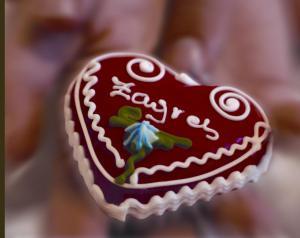
licitar
But then, so are the gingerbread hearts known as licitars. Having made their way into the UNESCO list as Intangible Cultural Heritage, the licitar makers are experimenting with decorations. Studded with mirrors or motifs, the bright red hearts make exceptional souvenirs. Traditionally, licitars symbolised hearts. During the medieval era, young men declared their love for a comely damsel. Back then the gingerbread was coated with edible red colour, and adorned with flowers and motifs. Today, the glossy red hearts can be found in almost all souvenir shops.
House of pain
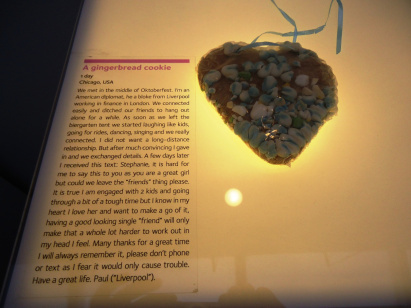 Gingerbread cookie at the Museum of Broken Hearts
Gingerbread cookie at the Museum of Broken HeartsMy tryst with hearts was not yet over, I realised, as I walked into the Museum of Broken Relationships. Ironically, this is the museum that exhibits mementos left by broken hearts. Pathos, humour stares out of each object in the museum. There is an electric iron, it was gifted by a groom who had used it to press his wedding suit, and it’s the only thing left from his marriage. There is a blue diaphanous top, which was worn by the wife of a man who took her out to lunch only to say that he was leaving her.
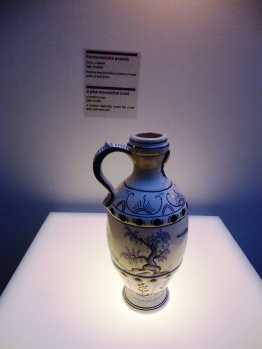 another exhibit at the museum
another exhibit at the museumThe brain child of film producer OlinkaVištica and her lover, DraženGrubišiæ, the museum was set up after they broke up. Today, the Museum of Broken Relationship displays more than a thousand objects symbolic of heartbreak. That the shop sells an eraser that can erase bad memories is incidental. The museum was awarded the Kenneth Hudson award for the most innovative museum, in 2011.
A tad depressed after the experience, I sauntered towards a restaurant to drown my gloominess in maraschino, a delicious liqueur made from cherries. The sweet tooth demanded more and it was not until I had splurged on Maraschino Pralines that it was satisfied. For those looking for some potent stuff, I would recommend the slivovitz (plum brandy). It can beat any cold and is capable of firing up even the most robust innards.
(Published in The Sunday Herald, May 10, 2015)
Filed under: Travel, Wine and Cuisine Tagged: change of guards, cravat, Croatia, Europe, kremsnita, licitars, Maraschino, Museum of Broken Relationships, neckwear, pastry, pralines, samobor, St. Mark's Square, zagreb








June 1, 2015
Date with serenity
A tryst with spiritualism and peace, Leh is not just a destination but an experience of lifetime
The Mighty Himalayas
A rich experience awaits visitors to Leh, an incredibly beautiful paradise nestled between the snow-peaked Himalayas at an elevation of 3500 m. The delightful sight of prayer flags fluttering in the breeze from the hills, lofty chortens and unpretentious mud houses greet the eyes as one enters the town. Leh was once an important halt on the trade route that connected India, Tibet and China for centuries. This was the route through which pashmina, cannabis, indigo and silk as well as brocade was transported by Bactrian camels on treacherous paths traversing dangerous mountain passes.
The high altitude and extreme weather around the monastery are little encouragement for fauna. During the cold winters, apart from denuded juniper and willow trees, there is hardly any vegetation on the barren land, which has earned it the title of a high-altitude desert. Spring, however, brings a riot of colour in the form of leaves and flowers all around the hills.From an important stopover in the Silk Route to a water-deficit place, Leh has come a long way.
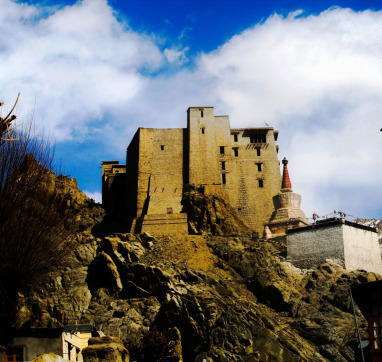 Leh Palace
Leh PalaceThe Leh Palace is a poor cousin of the grandiose Potala Palace that exists at Lhasa. Built in the 17th century by King Singge Namgyal, it was once the residence of the royal family. Today, the nine-storied structure can only boast of a magnificent view of the mountain range across the Indus Valley.
Perched on a hill and now a ruined memory of a glorious past, the sloping walls of the palace were once enveloped by rich murals and grand apartments but now the flaked murals and falling plaster speaks of neglect and vanished splendour. The Palace Museum is a repository of priceless thangkas, crowns, jewellery and other artefacts belonging to the royal family.
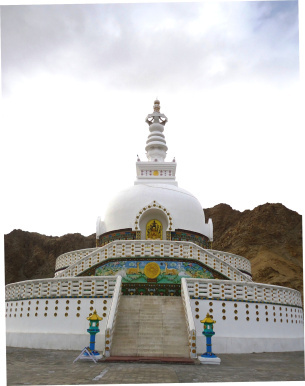 Shanti Stupa
Shanti StupaThe Shanti Stupa, a structure constructed by Japanese Buddhists for world peace, sits atop a hill, looking down upon the city with its surrounding arid lands populated by leafless trees. It offers a spellbinding view of the snow-clad peaks in the distance, a faraway monastery appearing like a speck in the binoculars.
The colourful courtyard of Hemis Monastery
The Hemis Monastery, which lies nearly 45 km away from the town, is a beautiful ancient structure. The ancient Hemis Gompa is one of the oldest and largest monasteries in Ladakh. Well-known for the Hemis Festival with its masked dances that draws thousands of tourists annually, it is otherwise a quiet and secluded monastery. Hemis was once the most prosperous monastery in Ladakh, where people congregated for rituals and benediction regularly. It also has the distinction of housing the largest thangka in the Ladakh region, which is unfolded once in 12 years. The ritualistic Buddhist chanting by the monks, as one perambulates the monastery, adds to the spiritual experience.
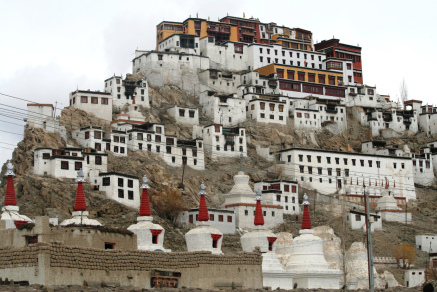 Thiksey Monastery
Thiksey MonasteryFrom there to Thiksey, the picturesque Monastery on hilltop is a beautiful drive away, through soaring poplars and scattered minor monasteries. The monastery turned out to be as beautiful as the pictures had promised. It has a striking resemblance to the Potala Palace and so it is fondly called Little Lhasa.Constructed on the parameters of Ladakhi architecture, the largest monastery in the central Ladakh region, is dedicated to the Gelugpa sect of Tibetan Buddhism (known as yellow hats). The colourful red and white structure, a 12-storied complex with numerous paintings, stupas and shrines cascading down the hill face and is entered through a red gate adorned with colourful mandalas.
Maitreyi Buddha at Thiksey Monastery
The walls of the gallery surrounding the courtyard are covered beautiful murals, including one of kalachakra (the circle of life). The enormous statue of Maitreya Buddha, seated in the lotus pose and wearing an intricately decorated crown, was installed in 1970 to commemorate the Dalai Lama’s visit. Visitors during the prayers hour are greeted by the sight of monks playing on trumpets and gongs while chanting mantras in unison. The adjoining Gonkhangh, reputed to be an ancient one, is a must-visit because the idols are very different to the Maitreya Buddha. The tiny museum within the premises holds a rich collection of thangkas, scriptures and interesting objects like trumpet crafted out of human bone, a wine vessel made from human skull.
exotic artefacts
The old town of Leh is a charming and bustling place with narrow lanes, mud and brick houses and tiny, dilapidated stupas. Most tourists are drawn to the market lining the main street of Leh, which is bounded by an ancient green and white Jama Masjid mosque, at one end and a lofty gateway at the other. The original masjid was constructed in the 17th century following an agreement between the Mughal Emperor Aurangzeb and the Ladakh ruler.The local market is a veritable treasure trove of exotic jewellery, thangkas and shawls that makes the visitors empty their wallets quite willingly. The tiny Tibetan market with its trinkets, prayer wheels, jade Buddha idols, studded incense holders, jewellery boxes, and bric-a-brac is a major tourist attraction.As the sun comes up, dozens of stalls selling vegetables and condiments, nuts and dried fruits, are set up by the roadside.
a frozen rivulet
Ever since the success of the Aamir Khan movie 3 Idiots, the Druk Padma Karpo School, where it was shot has been a star attraction. The school founded by the 12th Gwalwang Drukpa, a spiritual leader of the Ladakh region, has students belonging to impoverished families and boasts of many awards. The nunnery next door is an interesting place to visit. Built on the lines of Ladakhi palaces, this one has a pagoda-type roof, colourful wooden windows and an interesting facade. Known as Naropa Palace, the nunnery is surrounded by a large tract populated by ancient stupas. The prayer hall, with its large images of Buddha and Padmasambhava, is a calming experience where one can meditate for a while.
Out of the town, the Magnetic Hill on the road from Kargil to Leh promises an unusual experience that defies the laws of gravitation. When parked inside the box marked on the road with its engine turned it off and the gear on neutral, the car moves on the slight elevation on its own, at a speed of about 20 kmph. Leh is a place where one can see an incredible sky full of stars and experience a connection with divinity. Replete with white-washed stupas, stunning gompas and warm locals, Leh is not just a destination but an experience of lifetime, a tryst with spiritualism and peace.
FactFile
Reaching there: There are regular flights from Delhi and Mumbai to Leh. One can also do it by road from Manali and Srinagar.
Staying: Leh has dozens of stay options, from the low cost to the costly ones. Hotel Lasermo, Ladakh Residency and The Grand Dragon Ladakh are some of the options.
Other attractions: There are countless monasteries in and around Leh. Alchi, Likir, Shey, Matho, Lamayuru are some of the names. Don’t, however, miss a side-trip to the Pangong Lake and the Nubra Valley.
Food: While there are Chinese, Indian and other cuisines available, the momos, thukpa, pava and skyu are a must-taste. The butter tea is an acquired taste.
Shopping: It is difficult to retain a hold on the wallet when at Leh. The thangkas, carpets, rugs, shawls, prayer wheels, masks and Tibetan jewellery are items to splurge on. Also worth considering are apricots and Himalayan herbs.
(Published in The Sunday Tribune, 31 May, 2015)
Filed under: Travel, Wine and Cuisine Tagged: 3 Idiots, Aamir Khan, chorten, Druk Padma Karpo school, gompas, Hemis Monastery, Jama Masjid, Kalachakra, Leh, Leh Palace, Magnetic Hill, Maitreyi Buddha, Momo, Murals, Pangong Lake, Pashmina, Potala Palace, Shanti Stupa, Skyu, stupas, Thangka, Thiksey Monastery, Thukpa, Tibetan








April 28, 2015
Taste of Bavaria
Germans swear by their beer and biergartens are their favourite meeting ground during the springtime. The clink of beer mugs, laughter and chatter greeted my entrance. An aroma of beer hung around the atmospheric beer garden with scores of wooden benches where chuckling Munichers sat, some of them resplendent in Bavarian traditional attire.

A typical biergarten. Photo courtesy GNTO
Undoubtedly, Munich is the ‘Beer Capital of the World’, since it is packed with biergartens and beer halls. It is also the city where the world’s largest beer festival (Oktoberfest) is held every year. Beer and beer gardens are Bavaria’s gift to the world.
Seated under a sprawling chestnut tree, I mused about the history of biergartens. In the early 19th century, much before refrigeration was invented, brewers planted chestnut and linden trees above the cellars to keep the temperatures down. King Maximilian I, the then ruler of Bavaria, allowed the brewers to serve cold beer in these gardens and the concept of beer gardens was born.
During summers, they turn into an extension of people’s living rooms, such is the popularity of the concept. The largest one has more than 100 chestnut trees. Here beer is still served from wooden kegs in a traditional manner.
Gastronomic history
In its early days, no food was served in the biergartens so people brought their own food, and seated under the chestnut trees, they enjoyed their cold beer with home cooked food.
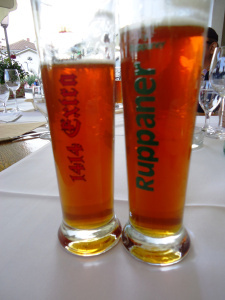
The practice still continues in some of the establishments though beer gardens have begun serving food. There are parts of the biergarten where the wooden tables are not covered with tablecloth and there is no waitress to serve the people who bring their own food. Traditionally, it was expected that the customers wash their own beer mugs.
After deliberating over the breakfast menu, I ordered the traditional Bavarian weisswurst breakfast, which was what I saw most locals ordering. Twenty minutes later, an unsmiling waitress set down a daintily painted ceramic pot, with a piece of bread covering its mouth, along with a basket of freshly-baked pretzels, a pot of sweet mustard sauce and a large mug of wheat beer.
Peeping into the ceramic pot, I spied two pieces of white sausages resting in salted, hot water. That was the weisswurst, brezel is what the Germans call their pretzels and the wheat beer is weissbier. Surprised that the Germans begin their day with such a large breakfast downed by beer, I looked around to find the locals engaged in the serious business of eating their breakfast.
The weisswurst has an interesting story associated with its invention, I found later. This Bavarian speciality was created right in the heart of Munich in an inn called Zum Ewigen Licht, located on the Marienplatz, way back in 1857. Story goes that the inn-keeper ran out of veal skins to encase the sausage.
He sent his assistant to procure some from the market, but the chap came back with pig casing instead. In the meantime, the customers were clamouring for their sausage, so the enterprising inn keeper used the hog casing, and fearing that the sausage would burst on grilling, he boiled them and weisswurst was born.
It soon gained popularity and is now an essential part of a Bavarian breakfast. Along with the weisswurst came a few rules for eating it. Back in the 1850s, with no refrigeration to speak of, weisswurst was made fresh every morning.
Since there was no preservative in it, the sausages had to be served before noon to prevent spoilage. A rule that the weisswurst should not hear the noon church bell tolling came into place. The practice still continues although some restaurants do serve the white sausage in the afternoon.
Eating techniques
The second rule is that the skin of the weisswurst is not to be eaten. The traditional way to eat the white sausage is by zuzeln. This involves biting off the end of the sausage and sucking out its contents.
It sounds quite easy, but isn’t so since a certain amount of expertise is required if one were not have the entire lot of contents sprinkled over oneself. A surreptitious look around revealed that not many locals were attempting to zuzeln. Most of them were content to slice the sausage into half and tuck in the contents. I followed suit.
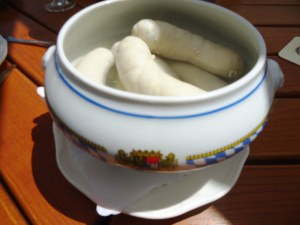
weisswurst
Slathering a generous amount of the delicious sweet mustard sauce, which is also known as weisswurstsenf since it is an essential accompaniment to the weisswurst. The sweet mustard sauce has an equally interesting history. Story goes that a businessman named Johann Conrad Develey, in 1845, set up a mustard factory in Munich. Initially, the production was limited to the French mustard, but soon new variations were tried and sold. In 1854, Develey had a revolutionary idea.
It is said that he blended the mustard with sugar, vinegar and spices and the sweet mustard sauce was born. The sweet mustard went on to become a craze with the Bavarians. Soon, its fame spread and everyone wanted a taste of it. The rest, as they say, is history. Around 150 years later, the Develey brand still manufactures its sweet mustard sauce along with other German specialities and sauces.
Coming to the brezel, they come in all shapes and sizes, sprinkled with sesame, poppy, sunflower, caraway or pumpkin seeds and occupy an essential part of the Bavarian bread basket that accompanies the weisswurst. The natural choice is the lye brezel that goes well with the white sausage.
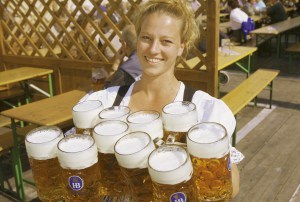
a smiling waitress, photo courtesy GNTO
The weissbier, of course, is another matter. The wheat beer, paler in colour, is also known as white beer. Like with the weisswurst, there is a drinking ritual for the weissbier, I was told. Since it is highly effervescent, this beer requires careful handling to prevent the loss of fizz. Long exposure to sun can render it undrinkable. To prevent extra foaming, one has to wash the glass in cold water and not dry it. Then tilting the glass, the beer is poured in carefully.
To reply to the question — did I try pouring weissbier? Of course not! Not in a mood to get into the nitty gritty of it, I sat back and enjoyed my typical Bavarian breakfast under the chestnut tree with the sound of laughter warming the cockles of my heart.
Prost! (as they say in Bavaria).
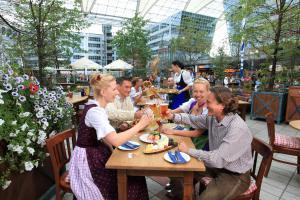
Cheers! Photo: GNTO
Fact File
Munich has more than 100 ‘biergartens’, the largest number of them in Germany.
Hirschgarten, the largest ‘biergarten’ in Munich, can seat up to 8,000 people.
In ‘biergartens’, beer is served by the litre, with no serving less than one litre.
Almost every restaurant, including beer gardens, in Munich and elsewhere at Bavaria serves
‘weisswurst.’
‘Weisswurst’ is served in pairs. Bavarians love drinking beer with their ‘weisswurst’. Try a glass of‘weissbier’ (white beer) with it.
Since the Bavarians love their beer,the standard serving of beer in Bavaria is 500 ml.
(Published in Sunday Herald, January 25, 2015)
Filed under: Travel, Wine and Cuisine Tagged: Bavaria, beer, biergarten, breakfast, brezel, Germany, Hirschgarten, Johann Conrad Develey, Marienplatz, Munich, mustard, Oktoberfest, pretzel, Prost, sausage, weissbier, weisswurst, Zum Ewigen Licht, zuzelm








Mauritian Melting Pot
Let no one tell you that Mauritius is only for adrenal- boost- seekers or beach-bums. Don’t let the canoodling and cooing honeymooners distract you, either. It has enough history, along with the other sports, to fit into an itinerary. Determined to experience the history before I began sampling the other pleasures offered in the land of Dodo, I landed (accompanied by at least a dozen honeymooners) at the Sir Seewoosagur Ramgoolam International Airport, one muggy day.
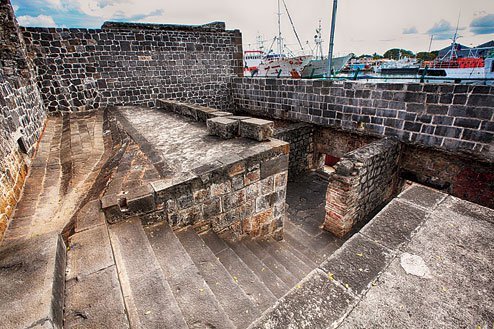
The Apravasi Ghat in Port Louis, now a Unesco Heritage Site, is where indentured labourers first set foot on the island; (Below) The concrete footsteps that are a tribute to the labourers who landed here; Pix: TANUSHREE PODDER
There was no better place to start that the often overlooked Port Louis. This is where the indentured labourers landed. The Apravasi Ghat, now a UNESCO Heritage Site, is where the girmitiya set their first foot on landing. A flood of scenes from the book Sea of Poppies by Amitav Ghosh came to the mind as I stood before the concrete pair of footsteps, a tribute to those who landed at the Coolie Ghat – as it was known then.
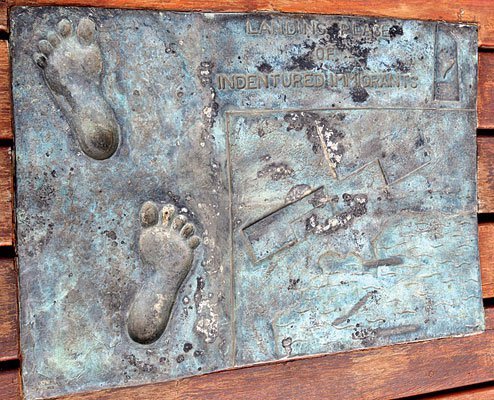
The indenture they signed, allowed them to return to their homeland after the contracted period of 5 years. Almost none of them went back. The crumbling structures of the cook house, immigration sheds, bathing area, a hospital and some unnamed ones, are a grim reminder of the tough times they faced. Here, the labourers spent three days before they were herded off to plantations.
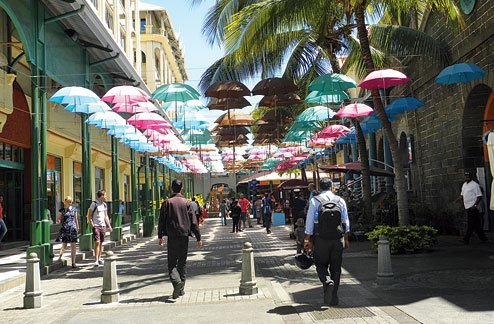
Le Caudan Waterfront
It was time to move on to happier things and I set off for the Le Caudan Waterfront, which is a favourite meeting ground of tourists as well as locals. This is the waterfront that is embossed on the Mauritian 50 rupees note. Food, fun, shopping, it has a bit of everything. An amateur philatelist, I couldn’t keep away from the Blue Penny Museum to visit its pièce de résistance – a pair of rare Red and Blue Penny Stamps that date back to 1847. Rumoured to have been bought for two million dollars by the Mauritius government, the two stamps are a part of only 26 such stamps in the world. Of course, the fact that only the replica of the stamps is exhibited while the originals are carefully stored did nothing to diminish its value.
A small sugarcane juice stall at the corner offered differently flavoured varieties of the juice, including a rum-fortified one. An ancient crusher along with a board with the history of its invention stood alongside. Fortified and curious about the serpentine queue near a tiny stall, I walked towards it only to discover that the queue was for the popular Dholl-Puri (dal-puri for us) combo. Brought by the Bihari immigrants, it is an inexpensive street food that draws the foreigners as well as the locals. Indian fare like samussa (samosa), biryani and farata (paratha) are equally popular at Mauritius, making it impossible for the hardcore Indian tourists to pine for home-food while on a holiday there.
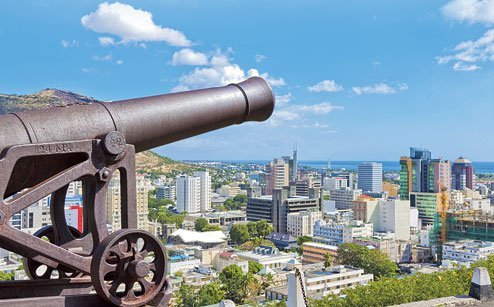
From the crumbling Adelaide Fort you can get a breathtaking view of Port Louis and the adjoining hills; Pix: TANUSHREE PODDER
A short uphill drive to the Adelaide Fort, which now has just a few crumbling ramparts and a diamond showroom, seemed a waste of effort till I stood near the old gun outside. The remnants of the Moorish fort offered a fascinating view of Port Louis and adjoining hills. From there, I caught my first glimpse of Champs de Mars, the second oldest race course in the world. That the Mauritians are keen gamblers and betters is evident during the special races like the Maiden Cup, Barbé cup or Coupe d’Or. While the elite owners of the plantations bask in their VIP seats enjoying a bottle of sparkling wine, the working class is content in sipping alouda (flavoured milk) and munching on Pistaches bouies (boiled peanuts) or pistaches grillés (roasted peanuts). Interestingly, the entry fee to the racecourse is waived off for women, except during the Classic races.
Having spent almost half a day at the capital, I decided to move towards the much touted Ile aux Cerfs (Creole for Island of the Deer) for a bit of sun and sand. The sugarcane fields stretched for miles as we raced on the snaking road towards the place. Past tranquil villages with quaint French names we sped under a sky so blue that it seemed unreal. Azure water, frothy waves and an endless stretch of white sand greeted my eyes along with the sun-worshippers who lay like beached whales. This is where most tourists land up for a bit of excitement and lots of tan. There, lolling under a sun umbrella, I spent time people-watching in the company of a fresh green coconut.
The next morning, keen to sample a bit of the many adventures offered by the island, I decided to join a group of adrenaline junkies. Scuba diving, snorkelling, kayaking, Parasailing and windsurfing, Seakarting, Submarine diving and Undersea Walking, Mauritius has all of them and more.
Postponing the thrill of other adventures, we decided to try a dip into the sea in the submarine. It seemed a nice way to explore the life undersea. Our group of ten enthusiasts was taken to a hydraulic platform, from where we climbed down the hatch of a tiny submarine.
Pressurised and air conditioned, though a bit cramped, the cabin had huge portholes that gave us an unstinted view of the goings-on. The submarine did a fast descend and minutes later we were passing through a canyon, gazing at the corals and the colourful fish. A rusted anchor of a 17th century galleon added an air of mystery to the adventure. The movie Titanic came to my mind as we passed the wreckage of a huge boat, now housing a host of corals and fish. An hour later, armed with a Diving Certificate for having done nothing but watching the fish float by, I called it a day. Of course I had the option of lolling under another umbrella at any of the dozen beaches in the North, East and West of the Island but I gave them a slip since I had made up my mind to sample some Creole delicacies.
Life on the island is leisurely and calming, I realised. Maybe it has something to do with the sighting of the last Dodo before it became extinct in 1681. Naturally, it became the mascot for Mauritius and peeps at the tourists from every corner of the country. T-shirts, artefacts, paintings and stamps, the Dodo is available for visitors to take home.
I did the rounds of other beaches, stood intrigued by the seven coloured earth at Chamarel, patted the lions and posed for pictures with them at Casela Nature Park and got drunk on Rum at the Rhummery but that’s another story.
Fast facts:
Reach – Air Mauritius has flights between Delhi, Mumbai, Chennai and Mauritius.
Visa – The best part about visiting Mauritius is that the visa is available on arrival and it comes free.
Stay – The Island is packed with hotels and resorts to suit all budgets. While Lux, Zilwa and Ambre are beautiful resorts while Le Pearl Beach in are good midrange options. There are expensive hotels like St. Regis and Four Seasons and also less expensive hotels as well as apartments and hostels.
Eat and drink – Mauritian food is an amalgamation of many kinds of cuisine. No one can feel homesick in that country. With an immense array of Indian food, it is possible to rush to a counter for some comfort food like Dholl Puri, which is just kachori by another name. And if you want samosa, there is plenty of it available. Baingan bharta, paratha, chutney, you get it all. For the adventurous palate, there is Creole cuisine and every other kind of cuisine one could want. There is also a plethora of exotic sugarcane juice that comes spiked with rum, beer and whiskey. Not to be missed is Dileau en pendent (Creole for coconut) and Dileu diboute (sugarcane), the island’s specialty. Rum is available in plenty, too.
See – For those interested in history, the World Heritage Site of Apravasi Ghat and the adjoining colonial structures at Port Louis as well as L’Aventure du Sucre (sugarcane museum), The Citadelle – Fort Adelaide, The Blue Penny Museum, and Pamplemousses Garden are a must-visit.
Adventure sports – There are umpteen options for both land and water. There is scuba diving, submarine, seakart, parasailing, kayaking, Kitesurfing, big game fishing as well as hiking, trekking, Biking, zipline – you name it. If you want to walk with the lions, it is Casela you have to head for and for those looking for sedate activities, there is golf.
Buy – vanilla pods are a must buy. Locally produced rum is a big draw, too. For those who love the glitter of gold, here’s good news. The metal is duty free in Mauritius.
Currency – The Mauritian Rupees is almost double its Indian counterpart.
Best time – Although Mauritius is a round-the –year destination, the peak season is from October to March.
(Published in The Telegraph, February 1, 2015)
Filed under: Travel, Wine and Cuisine Tagged: Adelaide Fort, Amitav Ghosh, Apravasi Ghat, Casela, Chamarel, Creole, Dholl Puri, Dileu diboute, Dileu en pendant, girmitiya, Ile aux Cerfes, indentured labourers, Island, Le Caudan Waterfront, Mauritius, parasailing, Port Louis, Rhummery, Sea of Poppies, seakart, snorkelling, UNESCO Heritage Site








Cherry Blossom City
Combine generous dollops of history, culture, arts and grace in a cauldron and give it a good shake to blend it well. The city that emerges from the mixture is Kyoto. Add to the mixture 17 UNESCO World Heritage Sites, 2000 Buddhist and Shinto shrines, three imperial palaces and you have a magical city that enrapture the visitors. The city is celebrated for its tranquil Zen gardens, tea ceremonies, Ikenobo and glamorous Geishas. Samurai, Haiku, Kagura, the words are synonymous with Kyoto, more so than any other city in Japan.
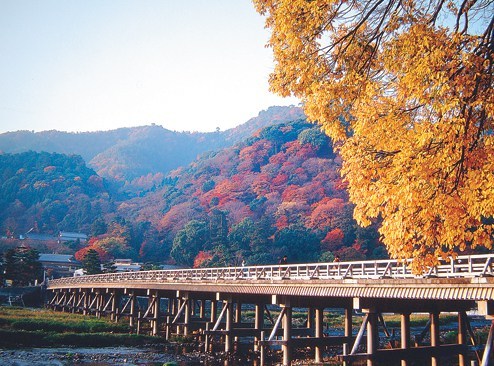
The Togetsu Koyo Bridge, or ‘moon crossing’ in Japanese, was so named by Emperor Kameyama to whom it appeared to lead to the moon. COURTESY: JNTO
Little wonder, travelers from all over the world descend on the city all through the year, especially during the cherry blossom season.
Tokyo, with its fast life can be overwhelming for most visitors who make a beeline to enjoy the serenity of Kyoto. Ringed by mountains on its three sides, with no less than three rivers flowing through it, the city is utterly beautiful. Come Sakura (cherry blossom) season and it turns into a captivating fairy land.
Once the capital of Japan, Kyoto was where the emperor lived. Like all rulers, the emperor patronized skilled singers, painters, miniaturists and warriors. As a result a great number of Samurai, actors and poet, flocked to the city for the royal largesse as did the businessmen with acumen. It was natural, then, that the city became an epitome of Japanese culture. It produced many noteworthy writers, playwrights and musicians. Kyoto remained the capital for over a millenium until Tokyo was designated as the capital by the Meiji government.
My heart was brimming with excitement when I landed in the historical city one lovely morning, determined to catch some of its beauty and buzz. Everyone I met suggested that the historic Higashiyama district is the best place to start. With its clutch of heritage sites that range from temples and shrines to delightful shops, it is a veritable beehive for the tourists. The narrow cobbled lanes had an explanation. It is said that there was barely any means of transportation during the medieval period. Everyone, other than the Emperor and nobles who were transported by ox drawn carts, travelled on foot. So, on foot, I traversed the streets ogling at the wares in the shops that flanked the steep, stone path that led to the Kiyomizudera temple.
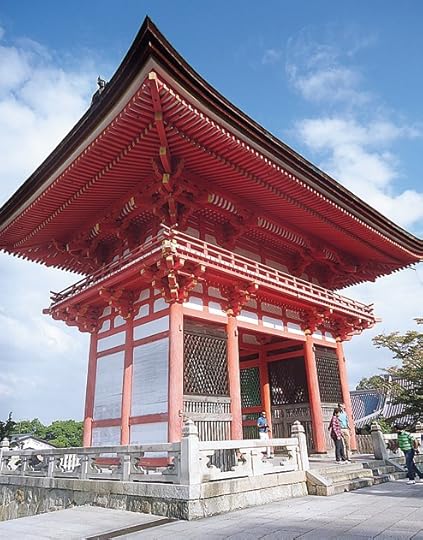
The gateway to the 1,000-plus-year-old Kiyomizudera Temple, which is a must-visit Unesco World Heritage Site. Pic : TANUSHREE PODDER
Some of the shops have existed for hundreds of years, catering to the pilgrims and tourists. The narrow lanes were buzzing with customers looking for souvenirs. Kiyomizu-yaki pottery, local sweets and traditional pickles sat cheek to jowl with Japanese fans and dolls.
Perhaps it was the promise of magical waters that drew me to Kiyomizudera, a word that means Pure Water Temple. That it wears the tag of UNESCO Heritage Site, gave it an added advantage.
The Kiyomizudera temple, sited near the Otowa Waterfall, dates back to the year 780. It was the pristine pure waters of Otowa that gave the temple its name. Dense forests populate the scenic temple on all sides. Standing on the wooden platform, I sighed over the view of the maple trees. The cherry trees were not in an obliging mood. The Sakura season was already over. In the sanctum sanctorum stands the statue of the deity Sanjusengen-do Kannon with 11 faces and a thousand arms, vowing the visitors with a calm expression.
The Jishu shrine, dedicated to love, was crowded with young hopefuls. In front of the shrine stand two stones. It is said that finding your way from one stone to the other, with your eyes closed, will lead you to love. On the other hand, those who need help to do so, are destined to require an intermediary to help them find a mate.

Visitors flock to the famous, five-storied Daigoji Temple during cherry blossom season. COURTESY: JNTO
My interest lay elsewhere. It directed my steps towards the Otowa Waterfall. Descending a few steps I reached the place thronging with people desirous of having their wishes granted.
Three streams of water flowed down, each one believed to grant a specific boon. A row of long handled cups were provided for drinking. While one of the streams represented good health and longevity, another one was for success and yet another for love. It was a difficult choice. Most people wanted to drink the water from all three streams but were warned against being greedy for drinking from all three streams would result in nullifying the wishes.
My next stop was at the Rukuonji Temple (Temple of the Deer), now popular as Kinkaku-ji (Golden Pavilion) temple. The three storey temple, resplendent and impressive, stood across the beautiful pond. Thousands of visitors jostled for the perfect picture as I stood gaping at the gold leaf covered pavilion. The stunning structure listed among UNESCO World Heritage Sites, is said to have been burnt down by a monk in 1950 and was restored to its former glory in 1955. Each of the three floors is designed in a different style. While the first floor is inspired by the designs of Shinden mansions, the second one is on the lines of Samurai homes and the third floor is based on the Zen style.
The next Zen temple, Ginkaku-ji (Silver Pavilion), I visited is located along a mountain. According to our guide, Toshi San, the temple is built on the lines of the famous Kinkaku-ji (Golden Pavilion). Unlike the gold leaf covering of Kinkaku-ji, there is no silver covered pavilion here. If locals are to be believed, it is so named because of the silvery effect on the structure during the moonlit nights. It is also said that the Shogun intended to layer it with silver but that didn’t happen in his lifetime. Whatever be the reason, the temple is impressive even without the touch of silver.
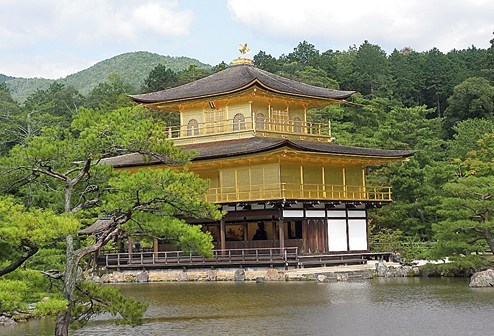
The magnificient gold leaf covered Kinkaku-ji Temple was originally built as a retirement villa for
a shogun. Pic : TANUSHREE PODDER
Interestingly, both the temples were constructed as retirement villas for Shoguns and later converted into temples. It is impossible not to be impressed by the beautiful Japanese gardens around the structures. The moss garden and a unique sand garden attract as many visitors as the main temple.
It was unthinkable to leave Kyoto without making a visit to Gion, which is the geisha district. Gion is the most popular place for camera toting tourists, looking for a geisha. This is where one will find the typical tea ceremonies, traditional wooden houses and . That evening, ambling along the cobblestoned streets of the district, I found dozens of likeminded travellers thronging the main street lined by ochayas. The ochayas (tea houses) are where the geishas entertain their customers but they are also meant for deep pockets.
Stern faced policemen prevented the tourists from stepping into the street ordering them to keep to the sidewalks. I was elated to find a couple of girls I presumed were geishas. The entire lot of us clicked away madly till our enthusiasm was deflated by a local. ‘They are tourists dressed up like geisha,’ he smiled. ‘It isn’t so easy to spot the real geisha. By the way, we call them geiko.’
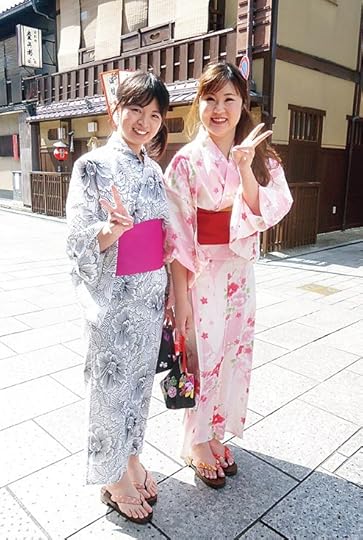
Tourists dressed up as geishas in the Gion district. Pic : TANUSHREE PODDER
I returned a tad disappointed to the hotel but not before I had enjoyed a typical Kyoto meal at a restaurant with traditional seating arrangement. Naturally, Kyoto remains on my re-visit list since I have to interact with a geiko. On a parting note – Kyoto has been named the World’s Best City in the Travel + Leisure World’s Best Awards for 2014. Also noteworthy is the fact that Haruki Murakami, comes from Kyoto.
Reaching There – a JAL flight from Delhi or Mumbai will take you to Tokyo or Osaka. From Tokyo you can reach Kyoto by bullet train or by road. It takes a little over 2 hours by train from Tokyo and just 28 minutes from Osaka.
Navigating through the city – the roads, according to Feng Shui tenets, are laid in a grid pattern so Kyoto is rather painless to navigate. The street cars, buses and subway are tourist friendly and easy to handle.
Staying – while there are many hotels and hostels to suit all pockets, traditional Ryokon Inns, with futons, kimono clad personnel and typical Kyoto cuisine are a unique experience.
Eating – Since the Imperial kitchen was in the city, the cuisine is of excellent variety. Take a pick from the Kaiseki Ryori (haute cuisine) or the Shojin Ryori (food of the monks) but do try the sashimi and tsukemono (pickles). Some of the best eateries are to be found in Gion and Pontocho areas.
Shopping – Since Kyoto is known as the crafts capital of Japan, splurge on things like ceramics, lacquer-ware and kimono but don’t forget to buy green tea and sake.
When to Go – Although Kyoto is a year round destination, the cherry-blossom season during spring (early April) is the peak period. The months of May, September and November are also busy season. If you want to avoid the high costs and crowds, plan to visit the city during the early autumn or late spring.
(Published in The Telegraph, March 8, 2015)
Filed under: Uncategorized Tagged: cherry blossom, Daigoji, geiko, Geisha, Ginkaku ji, Gion, Higashiyama, Japan, Kaiseki Ryori, Kikaku ji, Kiyomizudera, Kyoto, Otowa, Rukonji, Sakura, sashimi, tsukemono








Treasure Island
The immigration officer at Mumbai airport threw a quizzical look at the young man before me.
‘You are going alone?’ he asked.
‘Yes, of course,’ said the young man. ‘Why do you ask?’
The officer pointed at the long queue of newly-weds and smiled. ‘Rarely does a person go alone to Mauritius. It is a honeymoon destination.’
That set the tone of my trip. I was going solo, too. The intention was to de-stress, relax and rejuvenate. Visions of soft, silvery sand, azure water and waving palm fronds had been at the back of my mind when I packed my bag for the trip.
If you are looking for a spell of lotus eating, wing it to Mauritius. I am not joking. Here you can breathe in the fresh air, smell the flowers, loll on the beach and indulge in a spot of day dreaming by the lapping waves. Luxury here is surprisingly affordable, which makes the island doubly attractive.
a beautiful beach
It is one of the few islands where time has stood still since the early 19th century when the first of the coolies were brought here as indentured labourers from India; most of them from Bihar. They landed at the Coolie Ghat, now called Aapravasi Ghat, which is also a UNESCO World Heritage site.
where the indentured labourers first landed
It was not a leisure vacation for them, of course. They arrived to slog at the sugarcane plantations at a pittance. Although the leisurely pace has not changed, Mauritius has evolved into a hot destination since then. A confluence of cultures, cuisine and religion, the island boasts of the cleanest air in the region. A plethora of water-sports, lush golf courses, Blue lagoons, coral reefs, luxurious spas, gourmet cuisine, French colonial houses and the fresh air, make Mauritius an irresistible destination. It is also the island the Dodo inhabited. It definitely chose a good place to live in.
A smattering of French, Creole, Hindi, Bhojpuri and Tamil reached my ears as I landed at the island making me feel at home, instantly. I felt most welcome when my passport was stamped by the immigration authorities with visa, without any fee. Not many countries oblige the Indian travellers with such courtesy.
Driving on the snaking road flanked by verdant sugar-cane plantations, I let my mind wander aimlessly. On my itinerary were several unusual activities like interacting with the lions, diving down 35 metres under the sea-surface to say ‘hello’ to the corals, indulge in a bit of high octane adventure in a seakart and pump up the adrenaline level with some parasailing. My leisure vacation was likely to be interspersed by bursts of adventure activities.
There was a lot to choose from. Sailing with the Dolphins, driving a sea-scooter 3 metres under the water surface, exercising the arm muscles in a kayaking expedition or the calf muscles in a trekking expedition, dizzying ziplines, but not everything can be done in a week. It couldn’t be avoided. To be at Mauritius and not enjoy a few activities was unthinkable.
The dive into the sea was a thrilling experience. The wreckage of a huge boat and the rusted anchor added the necessary mystery to the adventure. As the submarine sailed into the narrow canyon in the coral reef, we sat goggle-eyed by the porthole as schools of captain fish swam lazily past. For forty five minutes we sat surrounded by the denizens of the sea, colourful, amusing and fascinating. It was an unreal world. Since it is not possible to remain enraptured by the surreal world, we went back to the shore where certificates that we had dived 35 metres underwater were awaiting.
[image error]
the submarine sitting on ocean bed
Seakarting, though daunting at first look, proved to be far simpler. With just a few buttons to flip and a wheel to control, we bumped and splashed over the outraged waves, taking a note of the picture perfect background. An hour later, wet and excited, I raced back with a satisfied smile on the lips even as Maurice, the exuberant leader, stuck his thumbs up stamping approval on our performance.
At the Casela Nature Park, an interaction with the lion cubs proved equally thrilling. Armed with just a stick, we ventured into the open space where the lions lolled with two of them occupying vantage positions on a tree. Matata, the fawn coloured lioness threw us bored looks and refused to face the camera. The hefty fee paid at the park for the privilege of patting Matata’s rump was finally recovered when prodded by the keeper, she finally obliged me with a frontal shot.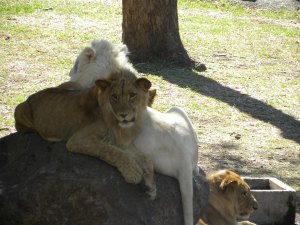
It was a poignant moment as we drove through the beautiful landscape around the le Morne when the driver narrated the story of the mountain. It was from the top of Le Morne Brabant that scores of slaves jumped to death rather than go back to their masters. Little wonder that the place has been classified as World Heritage site by UNESCO.
The Reserve Des Mascareignes, with its collection of more than 500 giant Aldabran tortoises, some of them quite ancient, is a big draw with the tourists. One last stop at the Chateau de Labourdonnais proved to be worth the effort.
It was time to get back to reality. I did so with scores of Dodo, the Mauritian mascot, imprinted on several T-shirts and souvenirs. There were hundreds of exciting moments on my cam but many more on my memory.
Getting there – Air Mauritius has regular flights between Mumbai, Delhi, Chennai and Mauritius.
Staying – Finding a resort or a hotel on the island is entirely dependent on the budget. You could opt for a high end resort like Lux or settle for an inexpensive hotels like Mon Choix at Port Louis.
Eating – While there are umpteen restaurants that offer Indian food, do try the Creole dishes like rougaille and Rhumarrangés while you are at Mauritius. Those with conservative taste can opt for French or Chinese cuisine.
Best time – The Island is a year round destination, September to mid-January are a good time to go. October to March is peak season.
Shopping – Vanilla pods are a great buy. Local flavoured Rum, available at Chamarel Rhummerie is a good buy. If you are not a rum person, you could pick some vanilla flavoured tea. The souvenirs with Dodo make a nice gift for friends.
Activities – Blue Safari Submarine or Subscooter, snorkelling, Interaction with the lions, parasailing, Quad biking, Kitesurfing, Hiking, biking, scuba diving and stand- up paddle. Golfers will find the spectacular greens next to lagoon, quite irresistible. For the adrenaline addicts, tandem skydiving, poses a fresh challenge.
Visit – The Apravasi Ghat at Port Louis, L’ Aventure du Sucre, Ile aux Cerfs, Flic en Flac’s beach, Trou aux Biche, Les Vanille Reserve des Mascareignes. Stop by the Blue Penny Museum, which has two of the rarest stamps in the world. Champs de Mars, which is one of the oldest horseracing tracks in the world. Chamarel, which has seven coloured earth believed to be created by the uneven cooling of volcanic rock.
Currency – Mauritian Rupee (MUR) is currently almost double the Indian counterpart (INR).
Warning – It is illegal to collect and take away shells or corals from the reef.
(Published in Asian Age January 3, 1025)
Filed under: Uncategorized Tagged: Apravasi Ghat, Casela Nature Park, Chamarel, Champs de Mars, Ile aux Cerfs, Le Morne, Mauritius, Port Louis, rougaille, seakarting, Trous aux Biche

















